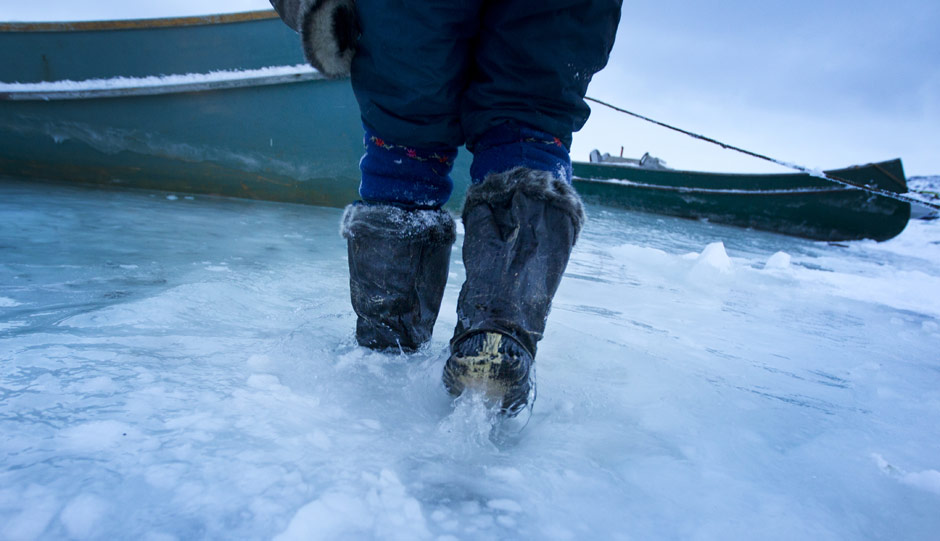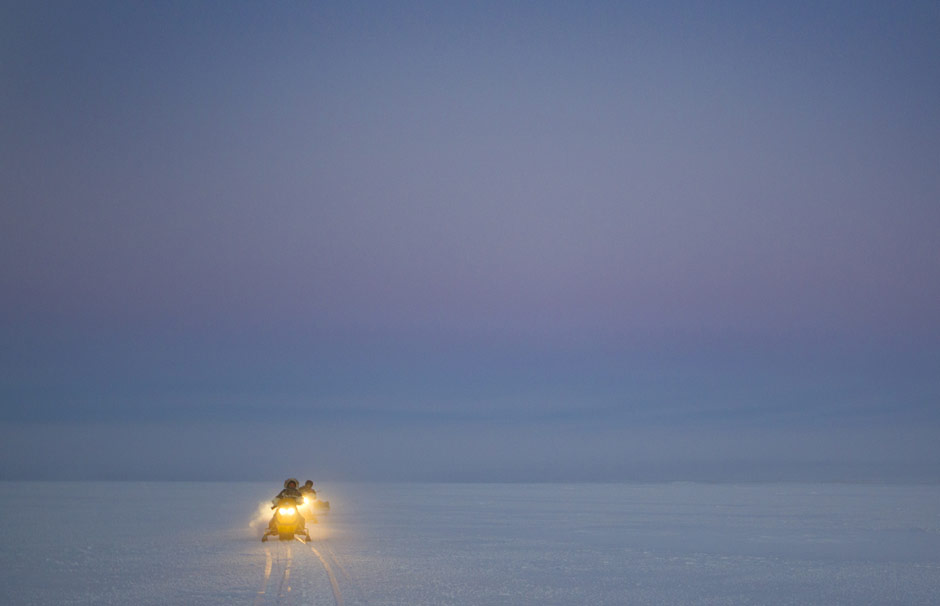This is part of The North, a Globe investigation of unprecedented change to the climate, culture and politics of Canada's last frontier. Join the conversation with #GlobeNorth
Writer Ian Brown describes the gravity of the Arctic landscape and climate as something that frightens and stops you, with the inarguable possibility of deadly exposure everywhere you look. Through photographer Peter Power's striking images, we understand.

Inuk hunter, Nuna Parr, 65, was up early preparing to head out to hunt walrus with other men from Cape Dorset, Nunavut on Nov. 16, 2013.

Nuna Parr's footwear is made from sealskin, which when sewn with traditional methods is waterproof.

A young boy hides from the biting cold while his mother walks backward to protect her own face in Igloolik, Nunavut on Nov. 23, 2013.

Zipporah Kalluk, left, and her friend, Regilee Ootook, who is visiting from Pond Inlet, stand on Kalluk's doorstep during the brightest part of the day in Resolute Bay, Nunavut on Nov. 21, 2013.

Churchgoers leave the Anglican Church in Igloolik, Nunavut following the Sunday service on Nov. 24, 2013.

Elder Susan Avingaq, 73, who was born in an igloo, enters a traditional sod home after gathering ice to melt for water on the outskirts of Igloolik, Nunavut.

Thick coatings of hoar frost are a reality all winter north of the Arctic Circle. Hydro wires in Cambridge Bay deliver power from diesel generators to homes and businesses.

The neon lights of the Co-op store in Cambridge Bay are a rare warm distraction from the blue hues of the northern twilight.

What is perhaps the most northern skateboarding half-pipe ramp sits partially buried in snow in Igloolik, Nunavut on Nov. 26, 2013.

Hoar frost builds up on a security fence surrounding the construction site of a new community centre in Cambridge Bay, Nunavut.

Gavin Greenley, 17, and his father, Bobby Greenley, ride on snowmobiles across the sea ice during a hunting trip for muskox east of Cambridge Bay on Nov. 30, 2013.

A caribou carcass, likely from a wolf kill, is all that remains on the Arctic tundra after the main herd migrated south to the mainland across the sea ice.

Sir Alexander Mackenzie School in Inuvik, NWT is condemned because of asbestos insulation and lead paint contamination.

A back hoe perched on the bow of the Louis Cardinal clears a path through the ice as the ferry makes its way slowly across the Mackenzie River at Tsiigehtchic, NWT on Dec. 3, 2013.

The beginning of winter, when the ice road is not yet solid enough to support large trucks, means the only way to move freight is by ferry, says George Niditchie Jr, 47.

Inuvik's winter water supply comes from the Mackenzie River and is pumped into town through a pipe decorated with Christmas lights to make it more visible to vehicles.

If one wants to know who should have a say in the future of the North, they should visit a graveyard like this one in Inuvik, says Nellie Cournoyea, the former journalist, NWT premier and land-claims negotiator. For the most part, southerners are not buried there.